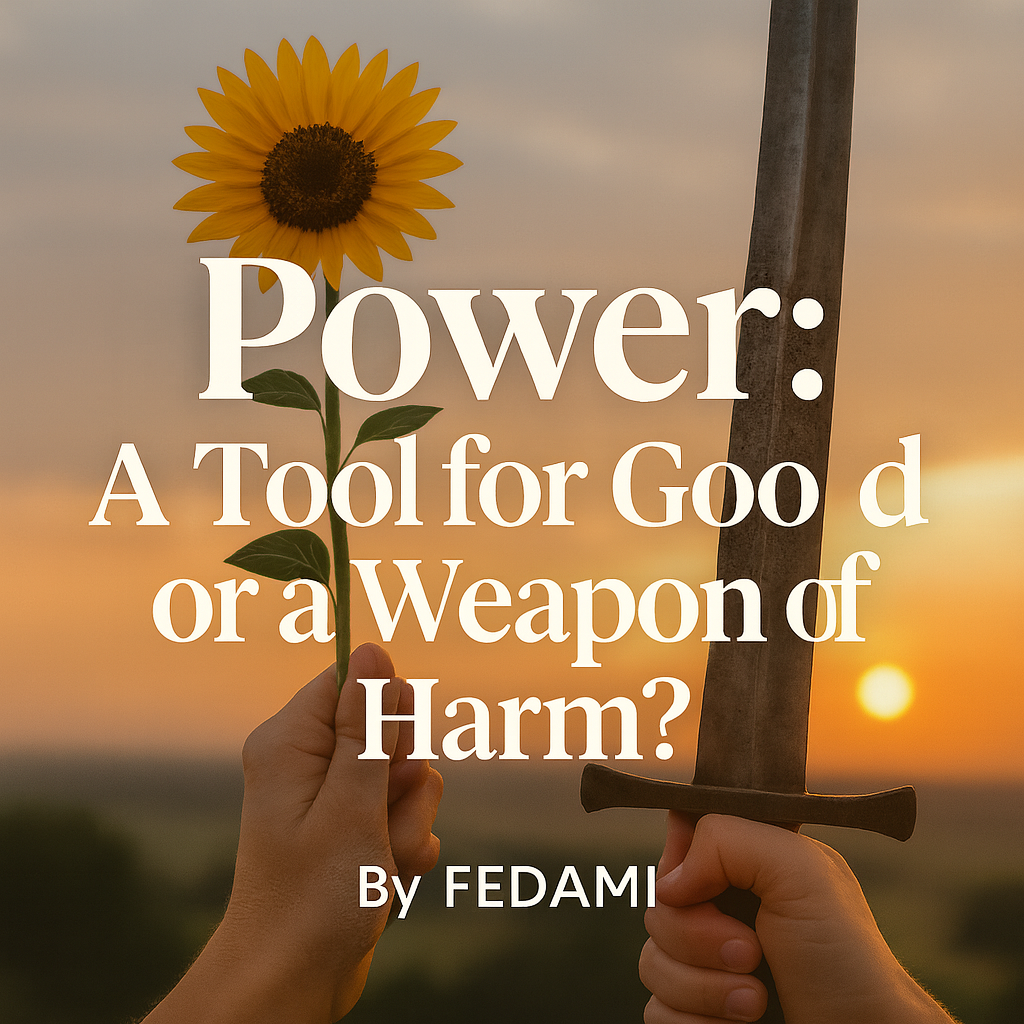Description
A structured and thought-provoking exploration of how power is used, or misused, in everyday life, from homes to boardrooms, and why rethinking influence is vital to building healthier families, communities, and institutions.
Introduction:
When we hear the word power, many think of presidents, CEOs, military generals, or politicians. But power isn’t limited to podiums or parliaments; it exists in classrooms, kitchens, offices, churches, and even casual conversations.
Power is influence.
And everyone has it. Whether they recognise it or not.
Understanding Everyday Power
Power can be as subtle as a teacher’s tone, or as visible as a judge’s gavel. Consider these examples:
- A teacher has the power to shape a student’s confidence or destroy their spirit with a single comment or grade.
- A boss can inspire a team to excel or create a toxic workplace with just one decision.
- A parent or homemaker sets the tone for a home, either building security or tension.
- A nurse, doctor, or caregiver makes choices that carry real-life consequences.
- Even a quiet team member can either uplift a work culture or quietly contribute to its decline.
In reality, power isn’t about a title; it’s about impact.
And with significant impact comes great responsibility.
Why Do People Misuse Power?
Power, though neutral in itself, becomes dangerous when placed in the hands of the unhealed or uninformed.
Common reasons people misuse power:
- Unhealed trauma – People often replicate the kind of power that was once used against them.
- A once-bullied child grows up and bullies others.
- A formerly silenced employee rises to leadership and silences others.
- Ego and entitlement – Some equate power with superiority and lose touch with empathy.
- Insecurity – Those afraid of losing control often cling to power through manipulation or intimidation.
Power can become a cycle of pain, unless we break it.
This is why it’s crucial to examine not just who has power, but how they use it and why.
The True Purpose of Power
Power was never meant to oppress. Its highest form is service.
When power is used well, it:
- Uplifts and empowers others
- Brings order, healing, and direction
- Builds trust and progress
- Protects the vulnerable
When power is abused, it:
- Breeds fear, silence, and mistrust
- Damages mental and emotional well-being
- Stifles growth and creativity
- Often creates long-term trauma
Power is a test of character, not a badge of superiority.
Practical Examples of Power in Action
- A manager who listens and advocates for their team builds loyalty.
- A teacher who believes in the potential of a struggling student can change a life.
- A parent who models emotional regulation teaches more than rules ever could.
- A friend who chooses empathy over dominance shows strength in compassion.
Power, when guided by values, creates lasting change.
Reflection Questions for Readers
Take a moment to reflect on your influence:
- How do I use the power I hold in my home, work, or community?
- Have I ever misused my influence out of fear, ego, or unresolved pain?
- What small actions can I take daily to uplift, rather than suppress others?
- Am I using my voice and position to build trust, healing, and connection?
Conclusion:
Power is neither good nor evil; it is shaped by the heart of the person holding it.
Let’s stop viewing power as dominance and start seeing it as a tool of responsibility.
Let’s raise children, lead teams, build communities, and shape systems where power heals, not harms.
Because in the end, power isn’t about position.
It’s about purpose.
And how you use it, consistently and intentionally, is what truly defines your legacy.
FEDAMI


Comments ()